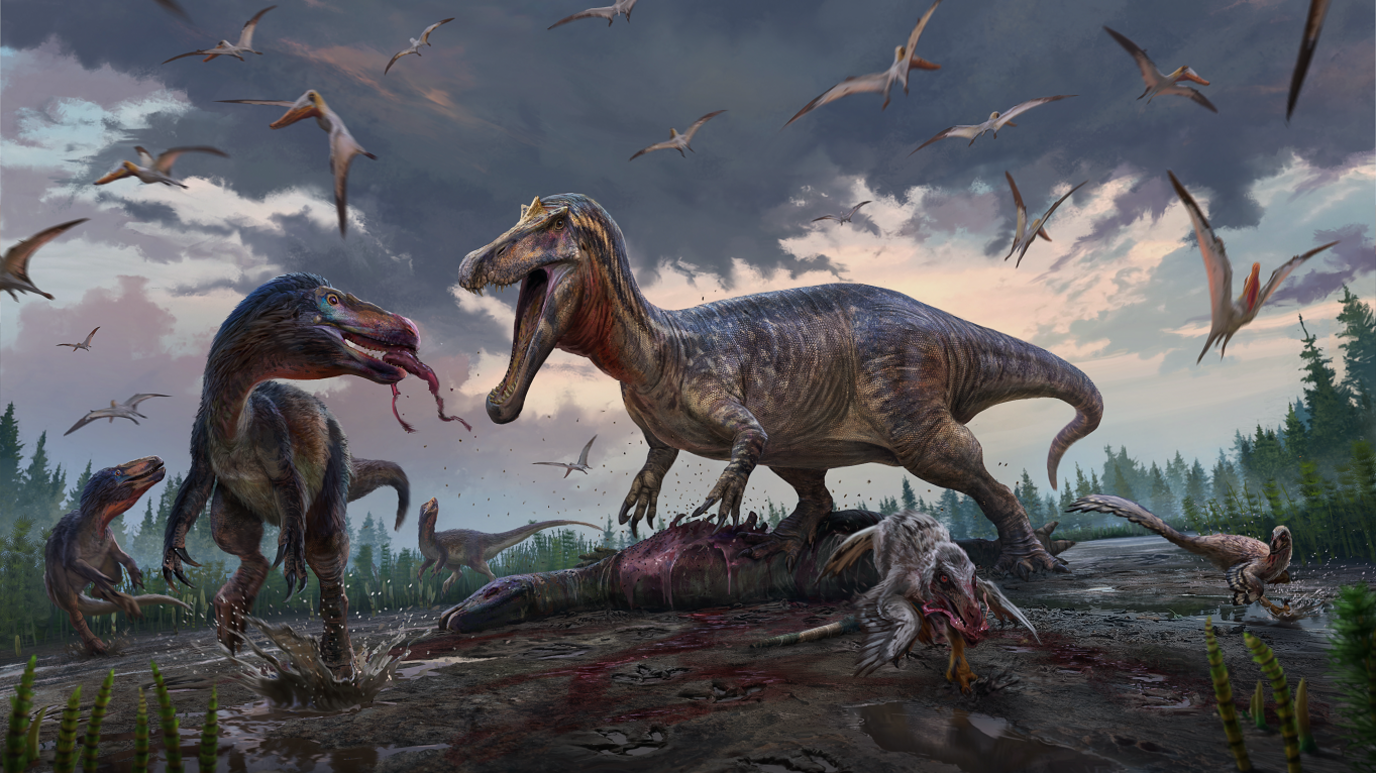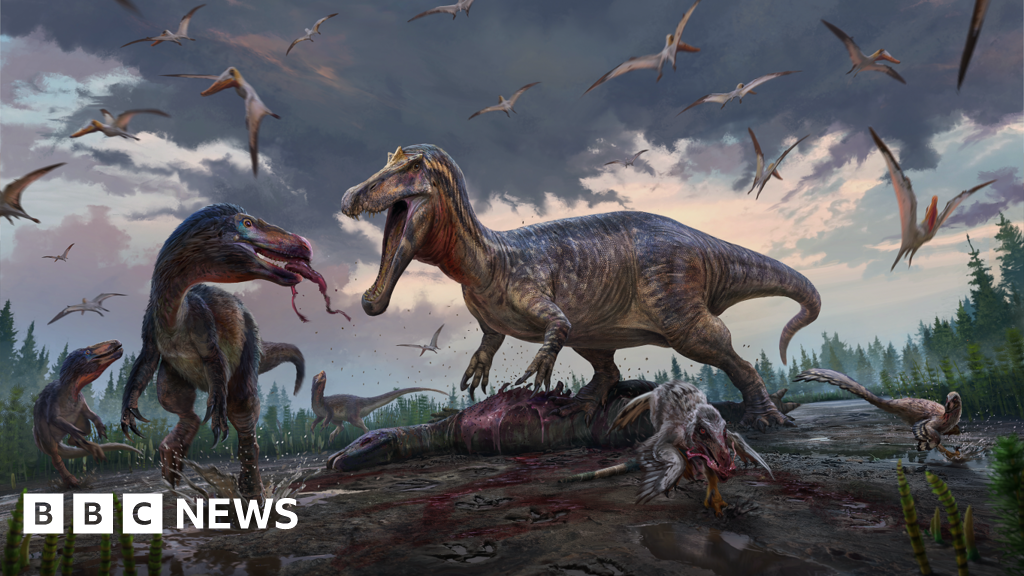 Image source, ANTHONY HUTCHINGS
Image source, ANTHONY HUTCHINGS
Image caption,
Bexhill would have been home to meat-eating theropods, say researchers
Dinosaur teeth found with the help of a retired quarry worker have revealed how the fearsome tyrannosaur once roamed Bexhill-on-Sea.
Research led by the University of Southampton found that several groups of meat-eating dinosaurs stalked the region of coastal East Sussex 135 million years ago.
It is the first time tyrannosaurs have been identified in sediments of this age and region.
The fossils were discovered by retired quarryman Dave Brockhurst, who has spent the last 30 years uncovering fossils from Ashdown Brickworks.
A whole community of predators belonging to different dinosaur groups – including tyrannosaurs, spinosaurs and members of the velociraptor family – were discovered by the study, published on Thursday in Papers in Palaeontology.
The tyrannosaurs would have been around a third of the size of their famous cousin, tyrannosaurus rex, it said.
Image source, University of Southampton
Image caption,
Retired quarryman Dave Brockhurst helped to discover how dinosaurs once roamed Bexhill-on-Sea
The tireless collecting of Mr Brockhurst was key to the discovery.
He has uncovered thousands of specimens in about 30 years, ranging from partial dinosaur skeletons to tiny shark teeth.
Around 5,000 of his discoveries have already been donated to Bexhill Museum.
Theropods are exceptionally rare at the site, and Mr Brockhurst has found 10 or so specimens there so far.
“As a child I was fascinated by dinosaurs and never thought how close they could be,” he said.
“Many years later I started work at Ashdown and began looking for fossils.
“I’m happy with tiny fish scales or huge thigh bones, although the preservation of the dinosaur teeth really stands out for me.”
Image source, University of Southampton
Image caption,
A CT scan was taken of an “indeterminate tyrannoraptoran” tooth
The new Bexhill-on-Sea dinosaurs are represented by teeth alone. The team used several techniques, including machine learning methods, to analyse the fossils.
Dr Darren Naish, a co-author of the study, said: “Southern England has an exceptionally good record of cretaceous dinosaurs, and various sediment layers here are globally unique in terms of geological age and the fossils they contain.
“These East Sussex dinosaurs are older than those from the better-known cretaceous sediments of the Isle of Wight, and are mysterious and poorly known by comparison.
“We’ve hoped for decades to find out which theropod groups lived here, so the conclusions of our new study are really exciting.”
Follow BBC Sussex on Facebook,, external on X, external and on Instagram., external Send your story ideas to [email protected], external or WhatsApp us on 08081 002250.



